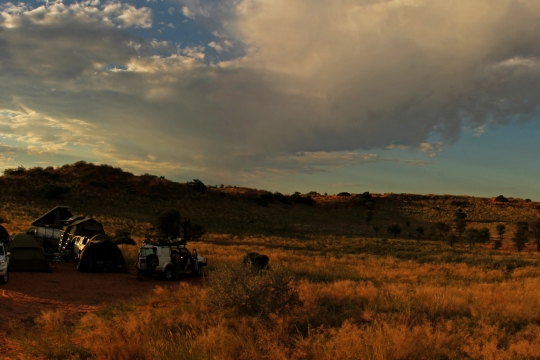South African conservation authorities could raise the daily park attendance fees for the Kgalagadi Transfrontier Park (KTP) by just over double, without a significant loss of visitors in response to the price hike. This would allow the park to boost its tourism-derived revenues, and the associated income generated for the previously disadvantaged communities on the edge of the park who are now beneficiaries of the country’s land restitution policies and who have land rights within the park.
A recent calculation by environmental economists here shows that a 115 percent increase in the daily conservation fee paid by tourists would almost double the park’s revenues, with only a slight loss of income owing to a small possible drop-off in visitor numbers in response to the increase.
Environmental economists from the University of Cape Town’s Environmental Policy Research Unit (EPRU) say that pushing up the daily conservation fee for visiting tourists is one of two possible avenues which park authorities believe could be a way to increase the income for the beneficiary land restitution communities on the edge of the park. Another solution would be to ask visitors for voluntary donations for these communities.
The Kgalagadi is one of the largest conservation areas in the world, with a footprint of 3.8 million hectares, and came into being when South Africa and Botswana entered into a transfrontier conservation agreement in 1999.
Two communities on the South African side of the park were given land rights inside the Kgalagadi in 2002, as part of the country’s land restitution programme, owing to their ancestral links to this land. A condition of the agreement was that the Khomani San ‘bushmen’ and Mier communities kept the land under conservation. According to South African National Parks (SANParks), the Kgalagadi earns 23 percent of its total tourism-related income from the daily conservation fee. Other tourism-related income is derived from accommodation, food sales, concessions, and other retail activities.
In the southern hemisphere summer of 2011, a research team headed by Dr Johane Dikgang, an economist with the Public and Environmental Economics Research Centre (PEERC) at the University of Johannesburg and EPRU associate, visited the park to gauge visitor attitudes regarding the daily conservation fee which all tourists pay upon entry to the park. Researchers conducted face-to-face interviews with overnight visitors at the South African gates to the park, as well as at accommodation facilities and rest camps, to test how much more they might be willing to pay to access the park.
The analysis, done by Dr Dikgang and fellow EPRU researcher Prof Edwin Muchapondwa, found that a 115 percent increase would significantly raise the park’s income, with only a small drop-off in visitor numbers and associated income, in response to the price hike.
The researchers did similar surveys with tourists at three other key South African national parks, the Kruger, Augrabies, and Pilanesberg. They found that some of these parks are more popular than others, and that they therefore aren’t competing with each other for visitors.
